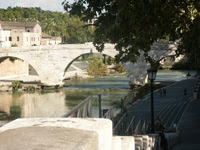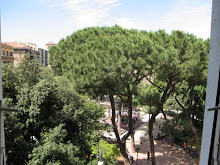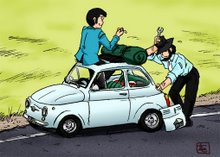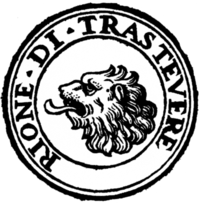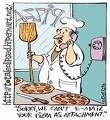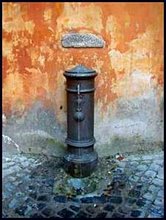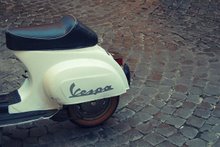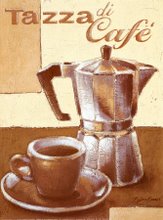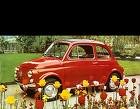 These are the days in which i would like to write & speak english seriously!But, fortunately, google translater come to me in aid...and today i'll be able to start the week talking about something.... grisly! The crypt of the Capuchin friars.
These are the days in which i would like to write & speak english seriously!But, fortunately, google translater come to me in aid...and today i'll be able to start the week talking about something.... grisly! The crypt of the Capuchin friars.In this crypt the Capuchin friars, so called thanks to their hood attached to thei religious habit, were buried until 1870. Is estimated that there are the rests of approximately 3.700 persons whose bones were arranged all along the walls !! Over the years this place of interment, prayer and reflection for the capuchins was transformed from a burial place into the work of art that it is today. Also the Marquis De sade visit the cryp in 1775 leaving an evocative descrition of it, as many other foreign writers made after him.
Inside the crypt can be distinguished five different rooms:
1. The crypt of Resurrection
On the rear wall, various parts of the human skeleton form a frame representing the picture of Jesus commanding Lazarus to come out alive from the tomb.
 The Christian belief in the Resurrection provides the key to interpreting this work of funeral art.
The Christian belief in the Resurrection provides the key to interpreting this work of funeral art. 2. Crypt of the skulls
2. Crypt of the skullsIn the tympanum, of the central niche, an hour-glass stands out with wings made of shoulder-blades representing that the time not only passes, but it flies. On the side walls you can see two Capuchins resting in curved niches. In the corridor vault, a lantern hangs from an eight-pointed star.The vault in the passageway is enhanced by a new element: a winged skull, its wings fashioned from shoulder-blades.
 3. Crypt of the pelvises
3. Crypt of the pelvisesThe side walls contain two Capuchins serenely reclining in an arched niche. The rear wall has three niches with Capuchins leaning forward: the two at the sides under an upturned arch, while the middle one rests beneath a large "baldacchino" made of pelvises, from which hangs a fringe of vertebrae. The central "rosette" in the vault is formed by seven shoulder-blades, with hangings made of vertebrae. On either side, the decoration ends with crosses bearing the instruments of Christ's passion: the spear and the sponge on top of a staff
 4. Crypt of the leg bones and thigh bones
4. Crypt of the leg bones and thigh bonesThe side walls each have four niches occupied by a Capuchin, standing and vested in the habit. Along the rear wall, the central block is a richly imaginative composition: up above, a cross enclosed in a circle; underneath, the Franciscan coat-of-arms: Christ's bare arm crossing the clothed arm of St Francis, surmounted by a crown of vertebrae. In the ground, 18 crosses mark the graves of various friars. The central oval frame in the vault contains an arrangement of jawbones decorated with vertebrae and, on either side, two large flowers made of shoulder-blades, with hangings of vertebrae. The corridor vault has three eight-pointed stars, a massive lantern hanging from the central one.
The two small skeletons against the rear wall are holding in one hand a skull with wings made from shoulder-blades. Impressed into the center of the vault there is a delicate skeleton enclosed within an aureole, the symbol of life coming to birth. In its right hand it holds a scythe, symbol of death which cuts down everyone, like grass in a field, while its left hand holds the scales, symbolizing the good and evil deeds weighed by God when he judges the human soul. The corridor vault is very rich and varied: four small five-pointed stars surround the other eight-pointed star from which the lamp hangs. On the wall opposite the door you see the striking design of the clock, its single face indicating the continuity of life, in time and in eternity.
 "All praise be yours, my Lord,for Sister Death,from whose embrace no mortal can escape.Woe to those who die in mortal sin!Happy those She finds doingyour most holy will:by you, Most High, they will be crowned".
"All praise be yours, my Lord,for Sister Death,from whose embrace no mortal can escape.Woe to those who die in mortal sin!Happy those She finds doingyour most holy will:by you, Most High, they will be crowned".
A complete Guidebook is available from the friar on duty.
 "All praise be yours, my Lord,for Sister Death,from whose embrace no mortal can escape.Woe to those who die in mortal sin!Happy those She finds doingyour most holy will:by you, Most High, they will be crowned".
"All praise be yours, my Lord,for Sister Death,from whose embrace no mortal can escape.Woe to those who die in mortal sin!Happy those She finds doingyour most holy will:by you, Most High, they will be crowned".(St Francis of Assisi).
A complete Guidebook is available from the friar on duty.
Via Vittorio Veneto, 27
Opening hours:9-12 a.m.; 3-6 p.m.
Opening hours:9-12 a.m.; 3-6 p.m.
Closed Thursdays



